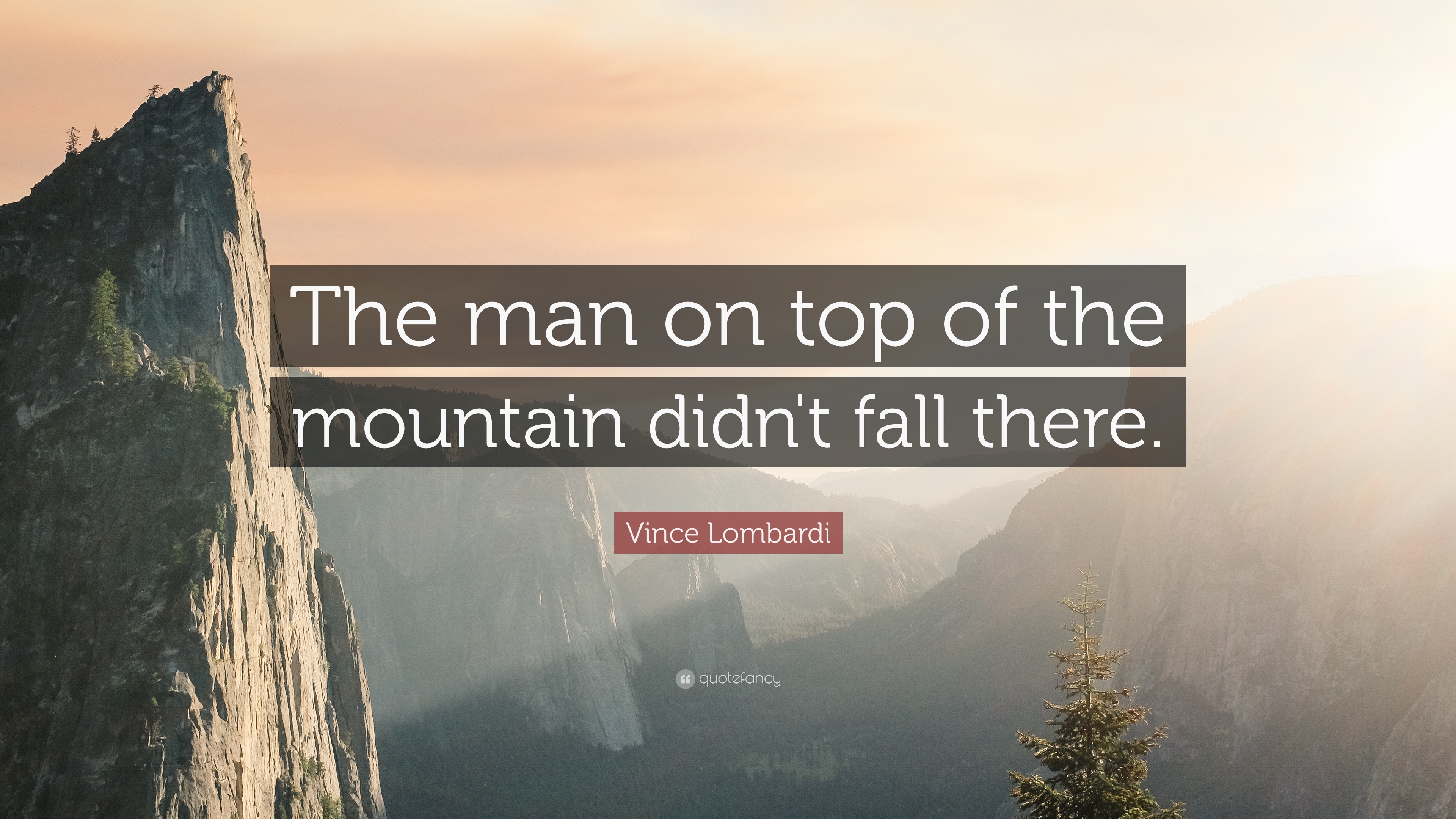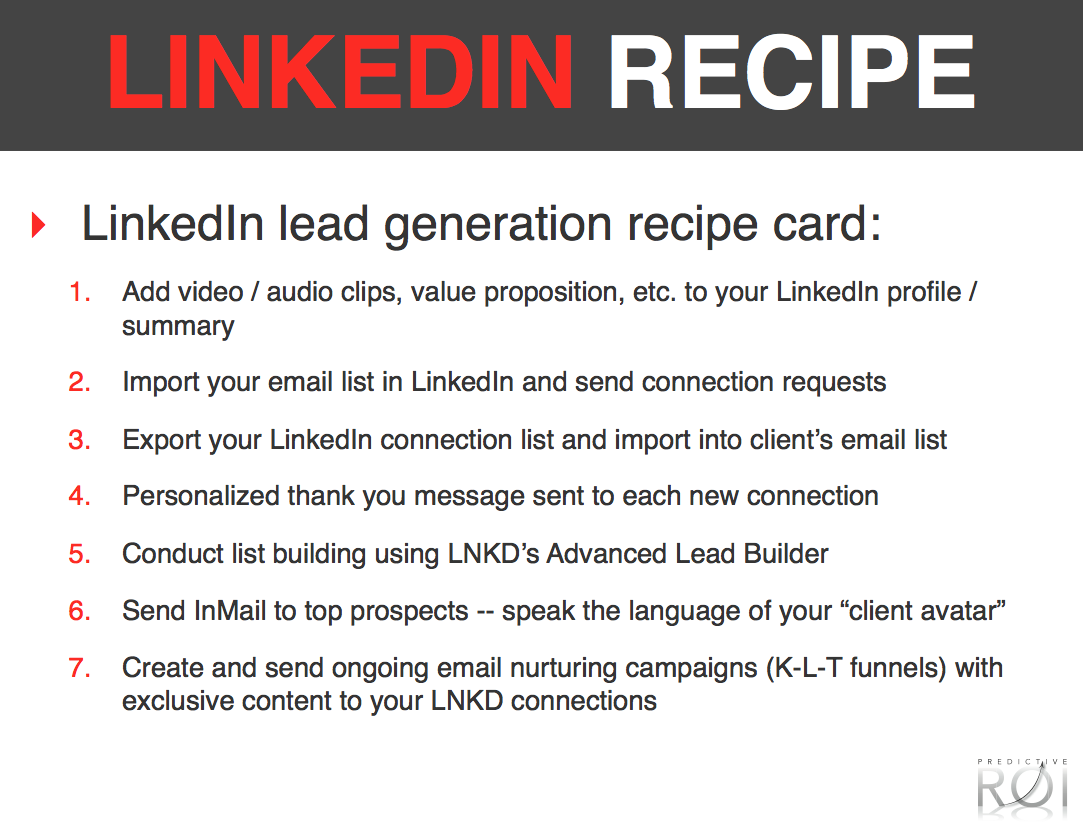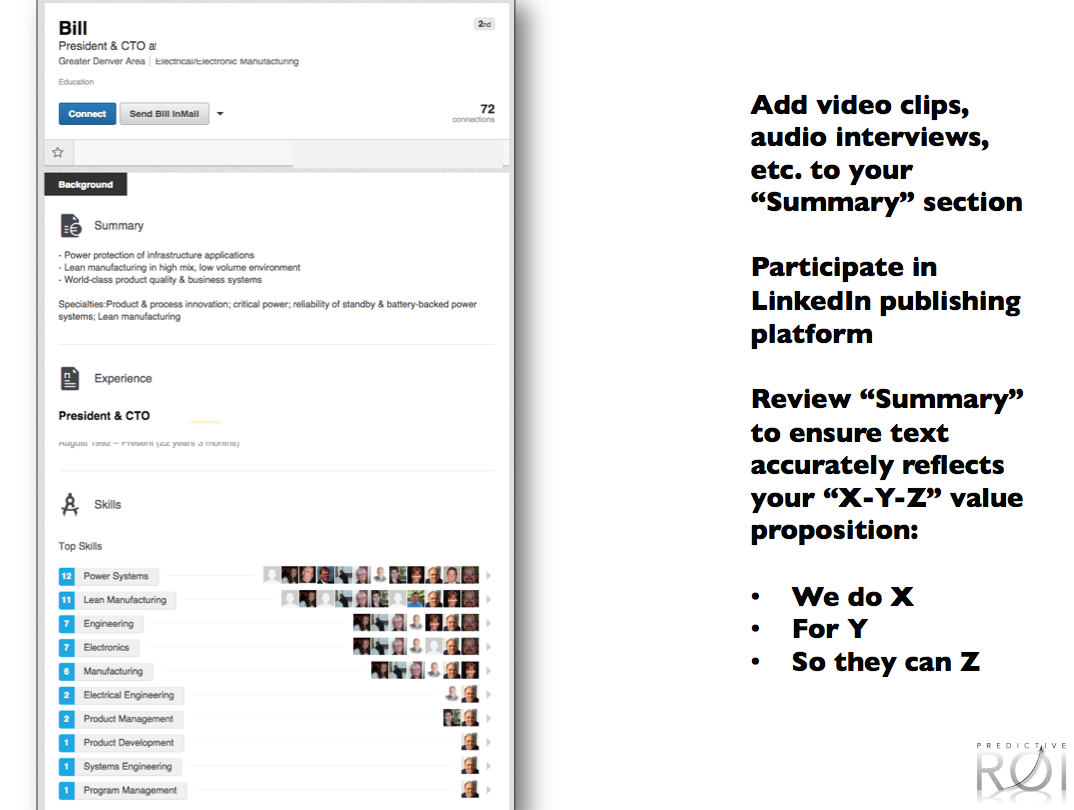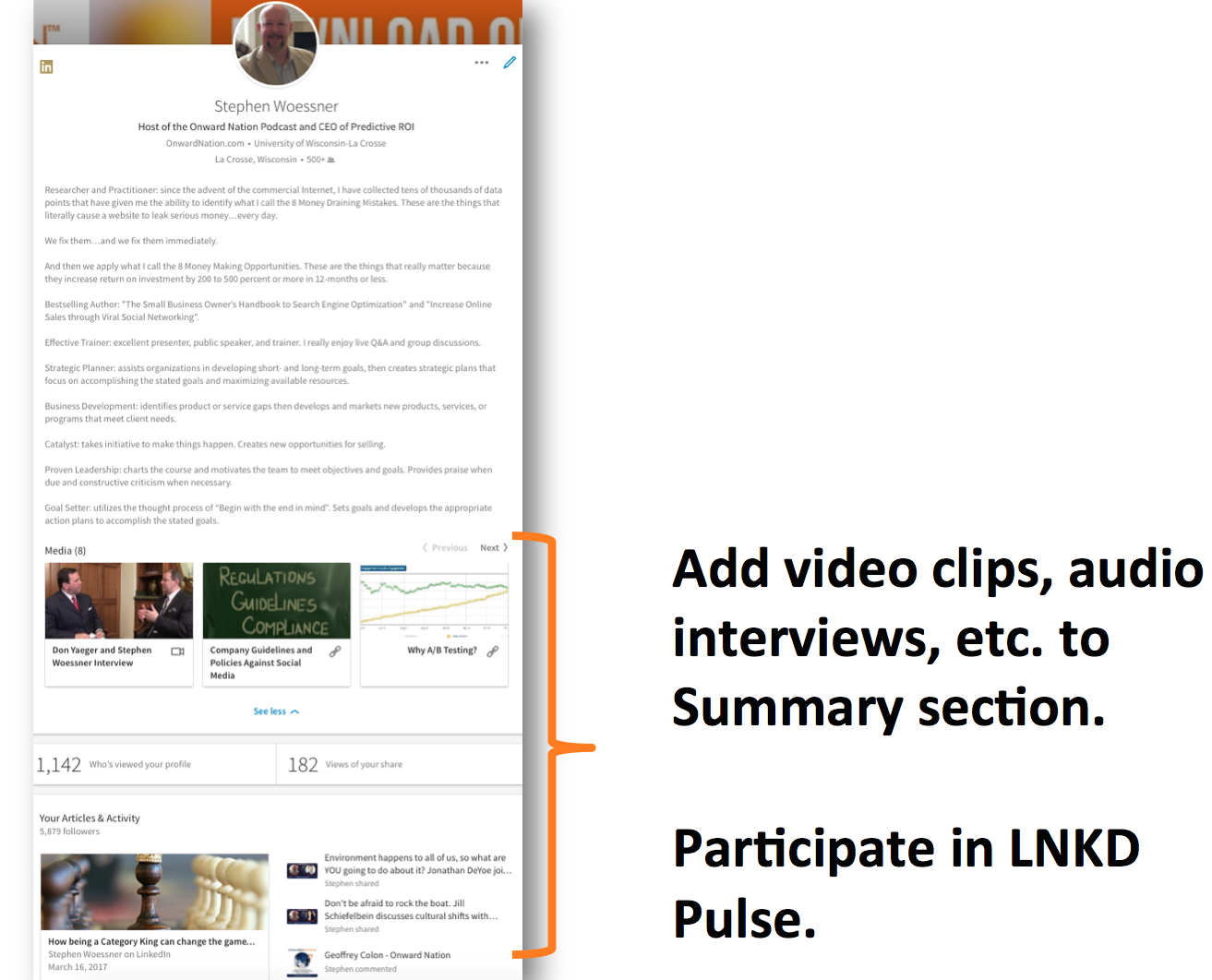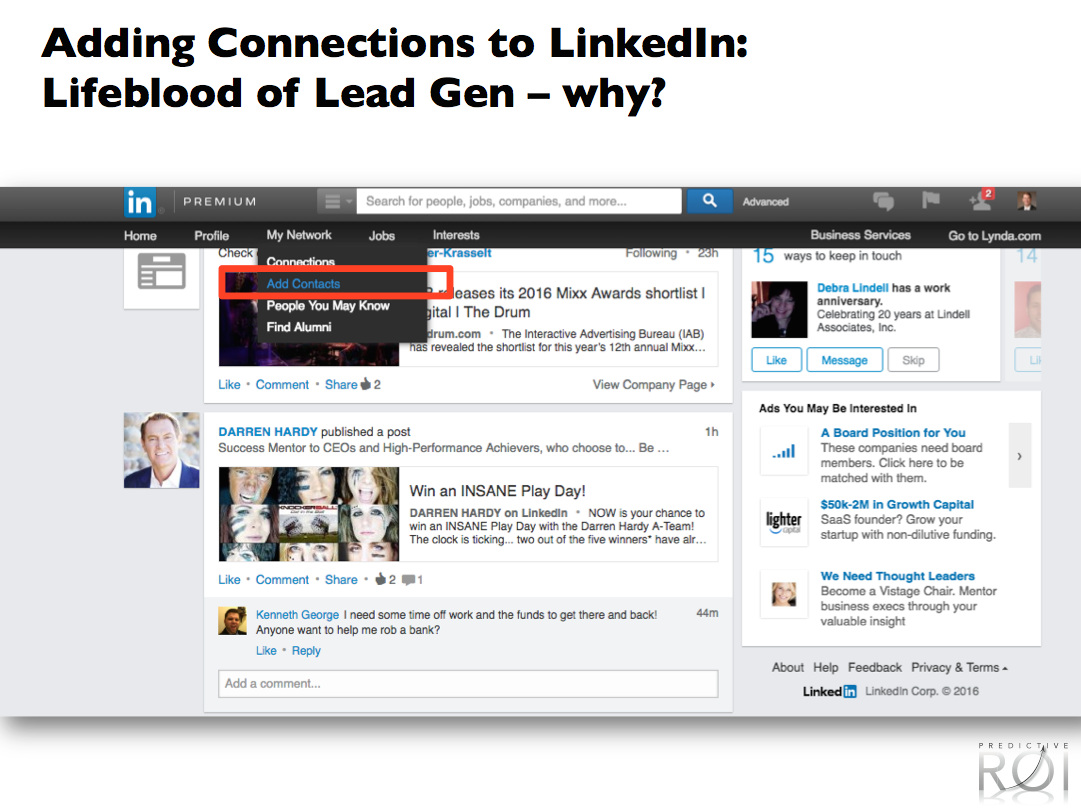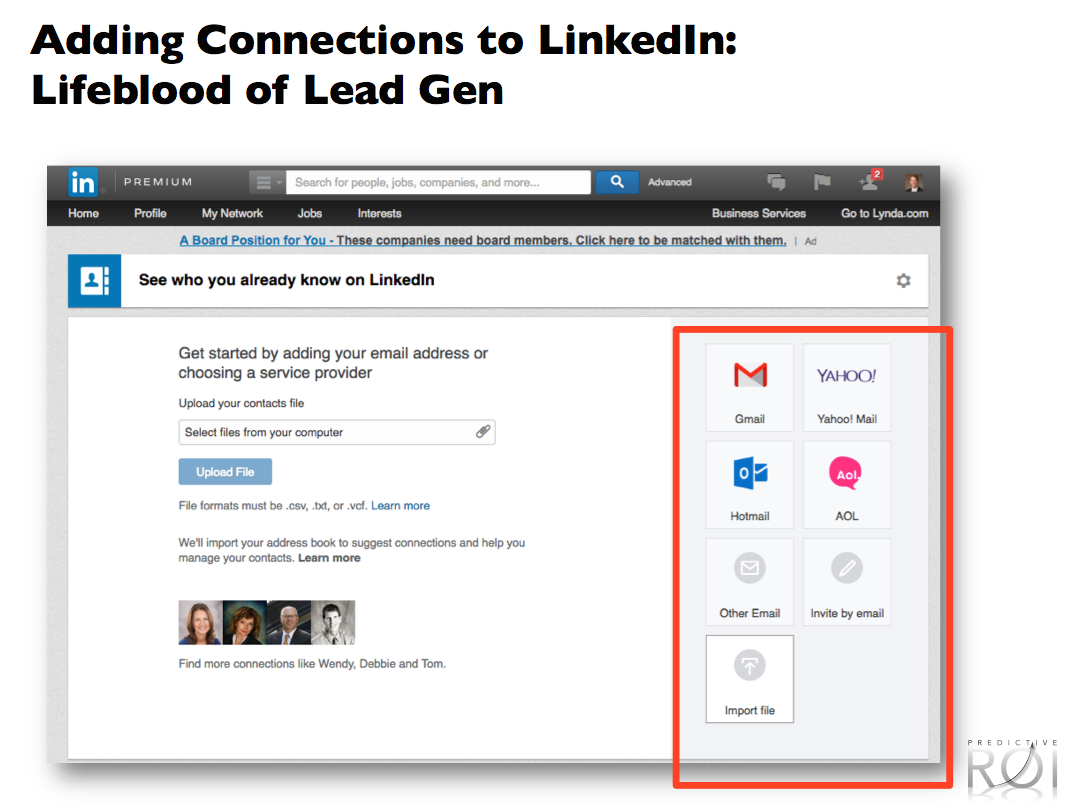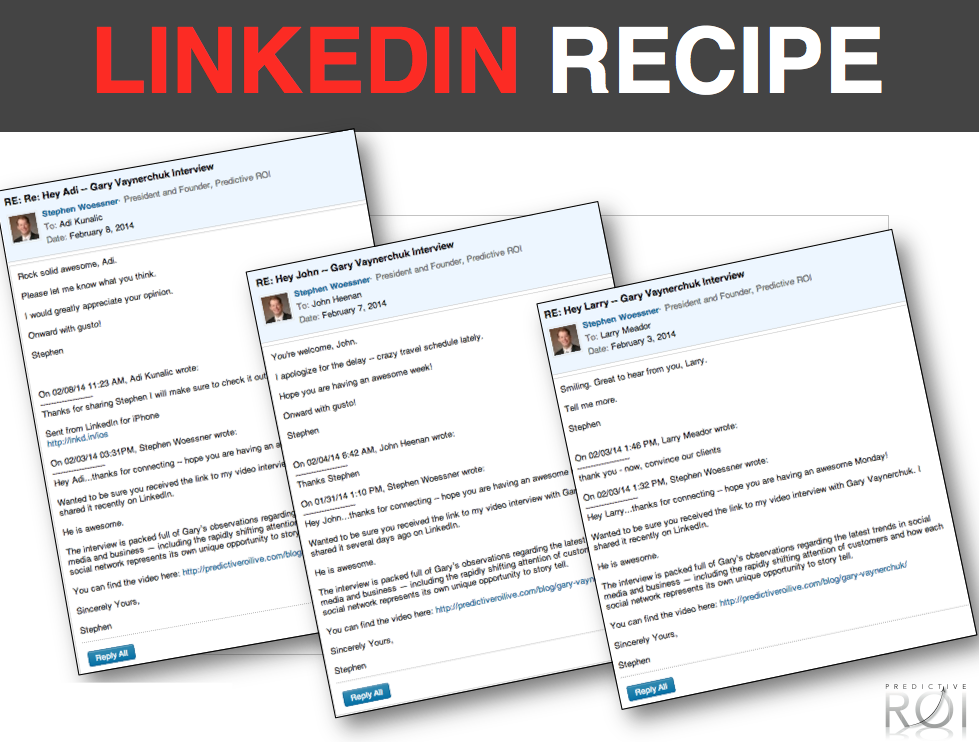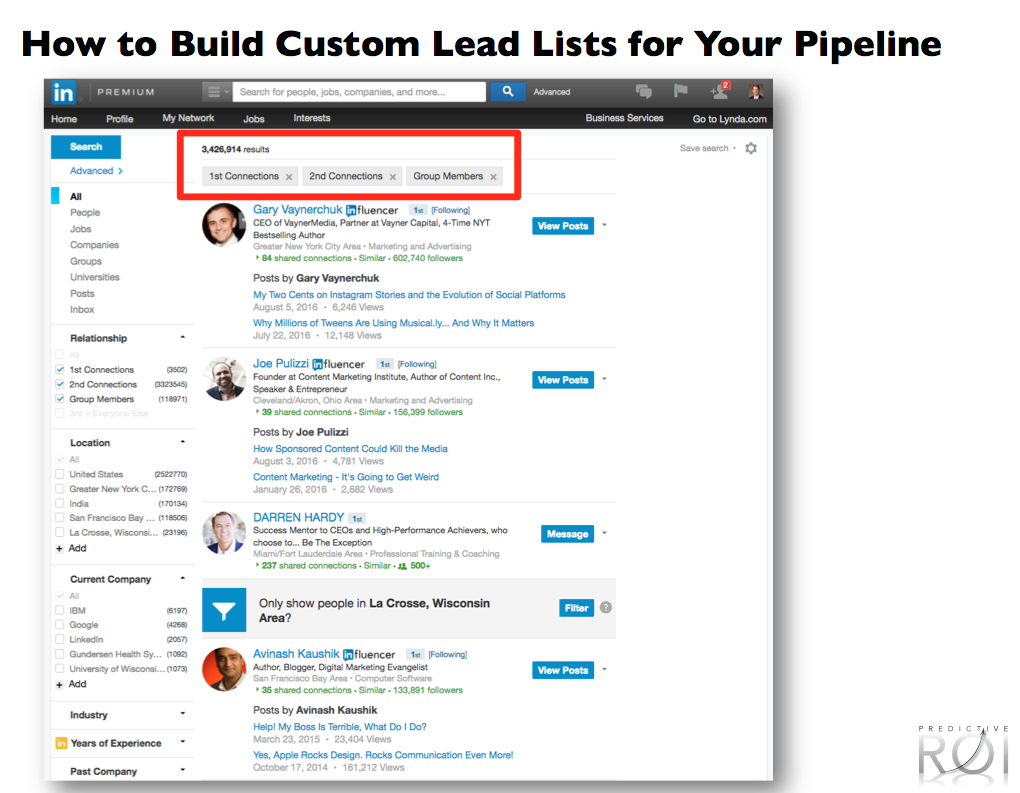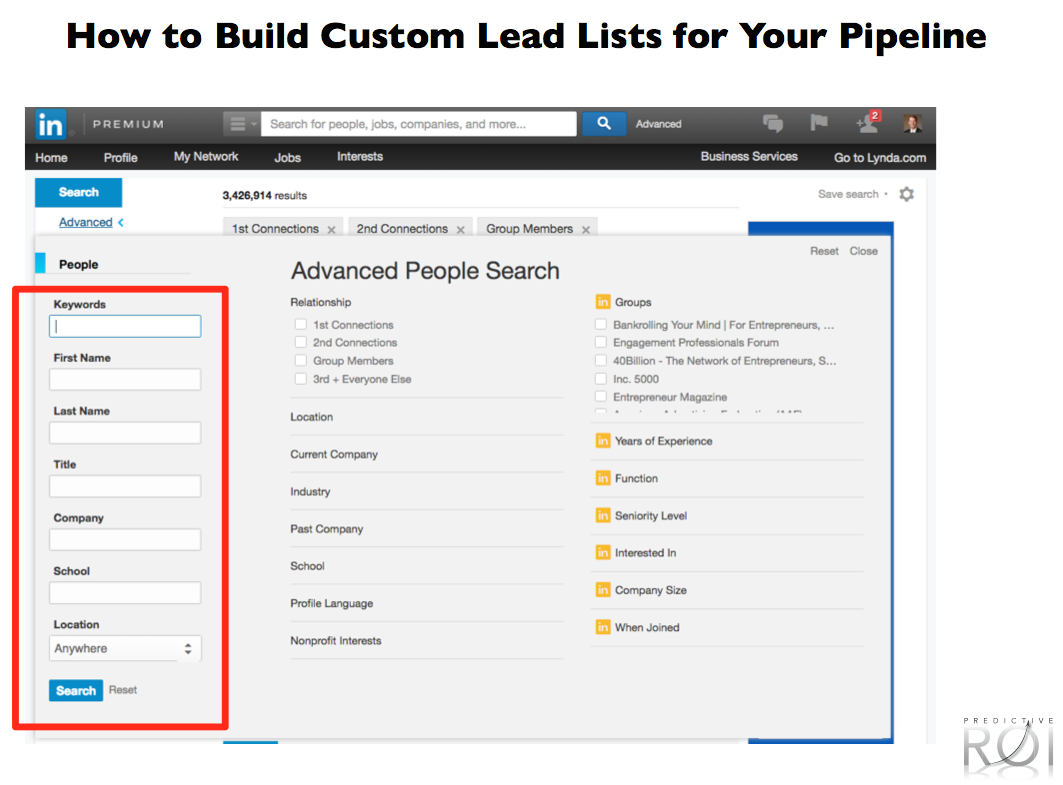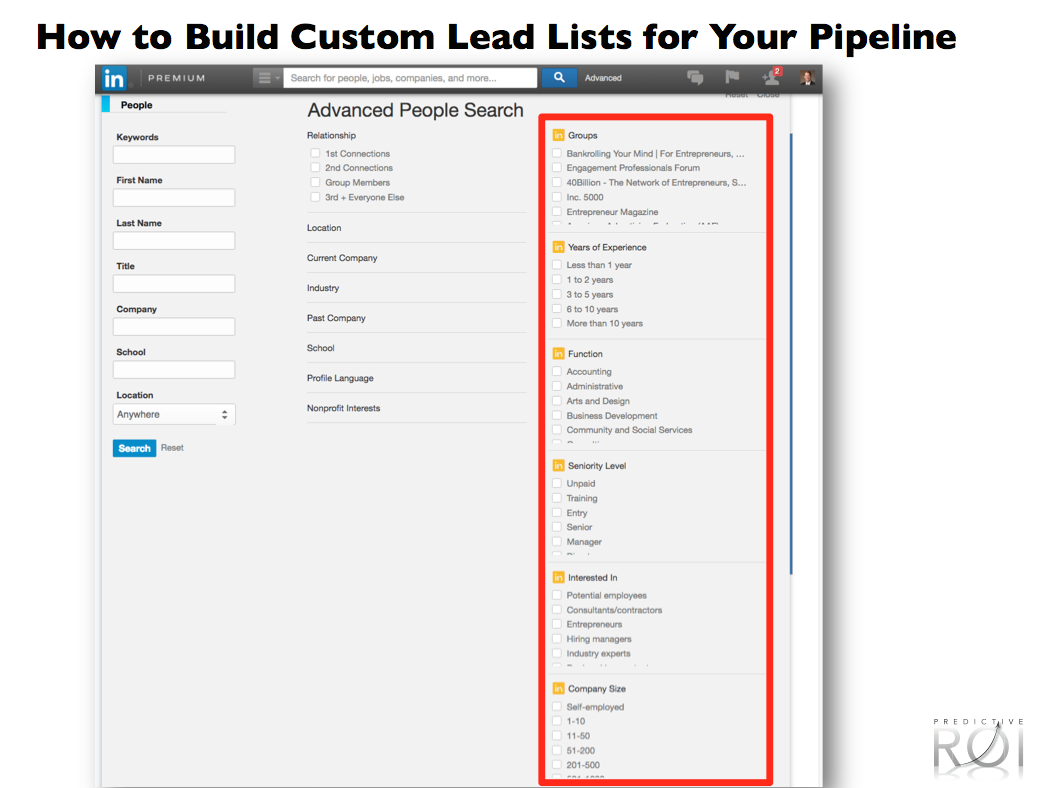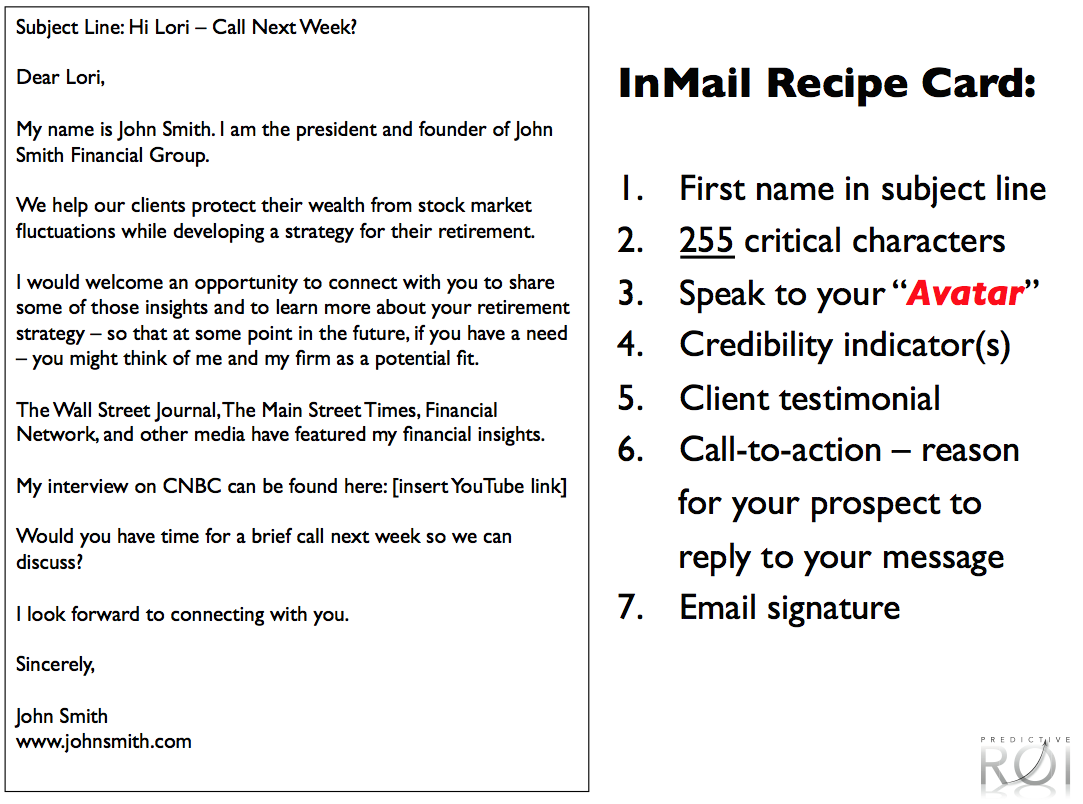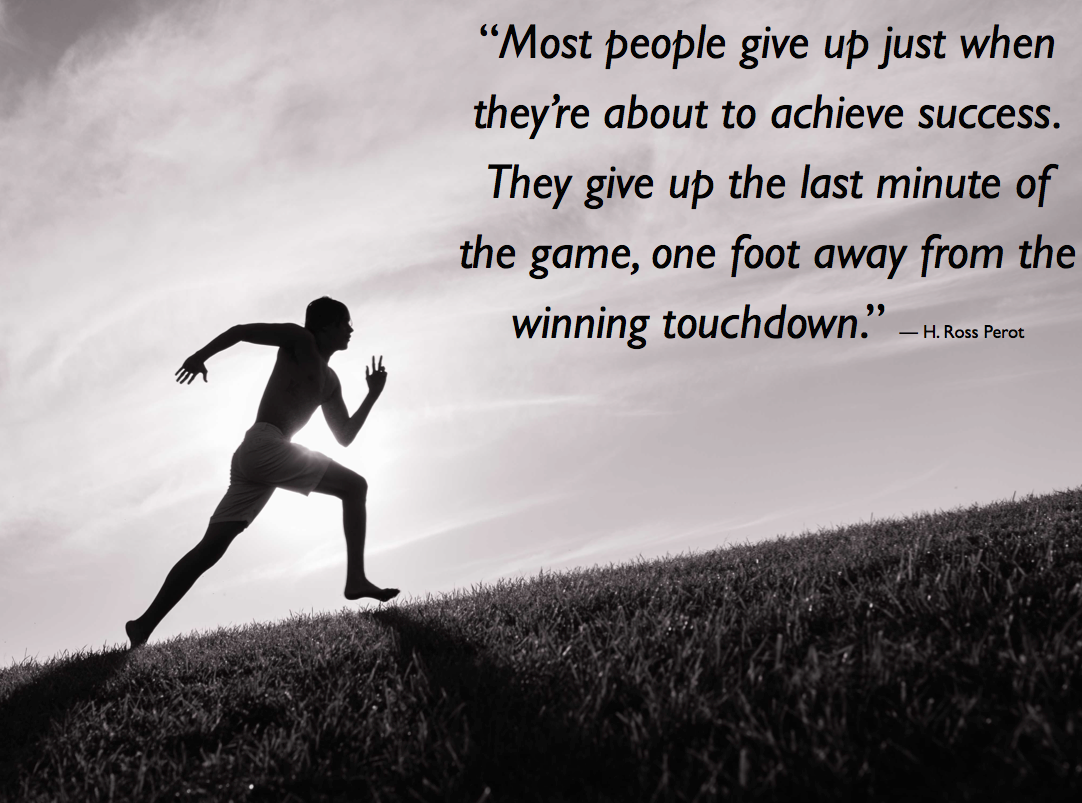How to Effectively Use LinkedIn to Fill Your Sales Pipeline Like a Pro, with Stephen Woessner.
Episode 455
Stephen is the CEO of Predictive ROI and the host of the Onward Nation podcast. He is the author of two bestselling books, speaker, trainer, and his digital marketing insights have been featured in SUCCESS, Entrepreneur, The Washington Post, Forbes, Inc. Magazine, and other media.
Subscribe to Onward Nation!
Good Morning Onward Nation – I’m Stephen Woessner and welcome to Episode 455 – this week’s solocast.
I am excited about the lesson that I prepared for our time together because it addresses the gaping hole that exists inside most businesses. I have been talking about it for a while now and the hole is the lack of qualified leads flowing into a business owner’s sales pipeline for his or her company. Here’s the most recent data…of the 28 million small business owners in this country – over 43 percent of them cite “growing revenue” as being their top challenge in their company. That is over 12 million business owners.
And yes, the challenge in growing revenue can be complex – it can certainly be impacted by value proposition – perhaps a business is trying to solve a problem that doesn’t actually exist. Or, perhaps their pricing is off. There could be a myriad of factors or obstacles in the way of a business owner’s ability to grow revenue.
But, in my over 20+ years of experience in owning five companies – and having interviewed over 450 of today’s top business owners for Onward Nation – I will say that the ability to generate leads – and – to generate leads at such consistency that a steady stream of well-prepared prospects flow into a business owner’s pipeline – represents the most significant challenge.
So that is going to be where we spend our time together today. We will focus on how to effectively use LinkedIn to fill your sales pipeline like a pro. Today’s lesson will provide you with the tools, resources, and step-by-step you and your team need in order to begin using LinkedIn to fill your sales pipeline like a pro.
And if you want to take the process even deeper, I encourage you to register for the web workshop I am teaching tomorrow called the 4-Steps to Filling Your Sales Pipeline. Just go to OnwardNation.com/webinar for the details. That’s OnwardNation.com/webinar.
Rest assured — I know you are busy. I will respect your time by delivering a workshop packed full of real, actionable strategies, that when followed, will fill your sales pipeline in 30-days or less.
I look forward to seeing you there.
Okay, let’s bring our focus back to today’s lesson…how to effectively use LinkedIn like a pro so you and your team can generate a steady stream of well-prepared prospects, grow revenue, and scale your business.
Before we dig into the tactical step-by-step…I want to first make ensure that we get your mindset right. Generating leads is not hard work…in fact…it is simple work…especially when you have the right recipe to follow, which I am going to share with you in full transparency in this solocast.
But…just because the work is simple does not mean it is easy. In fact, I can almost guarantee that you will be frustrated at the beginning, you may even pound your first on your conference room table and wonder why the results are not better, and you may get upset at your sales team for their lack of results.
All of this will most likely happen…initially. I am sharing this with you so that when it does happen – instead of getting frustrated and thinking that success will always elude you – I want to you to say to yourself, “Ah, Stephen said that I would think this right.”
And then push forward. Because pushing forward, whether we are talking about generating leads, or pursuing your life’s passion, is what it takes to be successful. As Vince Lombardi once famously said, “The man at the top of the mountain didn’t fall there.”
In fact, let’s think about the path of one of the most successful Hollywood actors of all time, Sylvester Stallone.
I learned this story from Tony Robbins. Stallone knocked on the doors of 1,500 talent agents in New York City and many of them multiple times.
And each time, Stallone was rejected, made fun of, and utterly ridiculed when he was thrown out of their offices. But he didn’t give up.
He knew his goal – he knew his destiny.
He didn’t send out one direct mail letter or email campaign – receive zero results – and then thought – “Well, the market doesn’t want me so I guess I will try something new.”
NO!
He was committed to what he wanted so he continued to adjust his presentation…he adjusted his offering…and focused on delivering even more value to the market.
And ultimately…that led to him delivering a huge amount of value in the form of the script of “Rocky”.
And then – Stallone “Made it.”
He appeared on the silver screen in the starring role as what seemed to be an overnight success. But that couldn’t be further from the truth, Onward Nation.
He had gritted it out for years and years and stood fast in the face of brutal and cruel rejections, in being dirt broke, and having to sell his dog just to buy some food.
But he didn’t quit – he kept getting up – to take another swing. You need to continue taking your at-bats because if you don’t…you may very well miss your golden opportunity for success.
Case in point…let’s take a look at Derek Jeter…arguably the greatest New York Yankee to ever wear the pinstripes.
Jeter is a lock to be a first-ballot Hall of Famer with his long list of impressive accomplishments including five World Series Championship rings.
But…what most people don’t know about Derek Jeter is that of all players in Major League Baseball history, he is number 12 on the list of total strikeouts. So to say that another way…there have only been 11 people in the history of baseball who struck out more often than Derek Jeter.
In fact, Jeter struck out 1,840 times during his 20-year career.
So in baseball terms, Jeter failed 1,840 times – but yet – he continued to get up there – to take another at-bat – to keep on swinging.
And through it all – he recorded 3,461 hits, which is 6th all time and he finished 11 of his 20 seasons with a batting average of 300 or better. A Hall of Fame resume to be sure.
But he never got up to the plate – struck out – and then headed back to the dugout and said, “Well, I guess I don’t have what it takes to play ball after all. Thanks for having me Skipper, but I am hanging up my cleats after that at-bat.”
The stories of Stallone and Jeter are perfect illustrations of how important it is to remain focused on the long-term – the long play – the end game – and getting better every single day so you continue to deliver more and more value — whether that value is delivered on the silver screen, the ball diamond, or in your marketplace as a business owner.
If the market rejects you – celebrate it – because that feedback is priceless.
Then be smart and use it – learn from it – apply it – get better – and take another at-bat. Onward Nation, if you remain focused on continuous improvement – you will be successful in implementing the lessons I have prepared for you in this solocast.
This is a long haul – it requires data collection – testing – adjusting – testing again – scaling – making mistakes – testing again. But, if you stick with it…you grow and scale your business in such a way that your competitors will wonder what your secret recipe is.
And how will that change the game for you? It’s exciting to think about. No doubt it’s substantial.
I believe the great Archimedes had it right when he so wisely said… “Give me a lever long enough, and a prop strong enough, and I can single-handedly move the world.
So, what will your lever and prop be, Onward Nation?
You guessed it…chocolate cake.
I know – chocolate cake sounds silly, right?
But let me explain why this metaphor makes so much sense.
Let’s say that I happen to make the world’s best chocolate cake. The absolute best.
And I have spent the last 20 years perfecting my process.
And then you come along and ask me to teach you how to make my cake – the same cake – the one that took me 20 years to master!
How could this be possible?
You, Onward Nation, may not have spent the same 20 years perfecting your baking skills.
How could someone other than me even come close to duplicating my chocolate cake?
What would I need to give you to prepare you – that could ensure your success?
For one…I would need to give you my recipe, right?
Because with my recipe, you can see my full process. You can see the strategy behind the chocolate cake.
With the recipe, you begin to get the overall picture of what needs to happen.
But, what else? What else do you need beyond the recipe?
Yep, you need the actual ingredients!
With both the ingredients and the recipe, you now know how to put all of those things together – in the right order – in the right amounts – at the right time – and how long to bake the cake and at the right temperature.
And if you follow the recipe – and if I didn’t accidentally leave anything out of the recipe card that I gave you – you now have the ability to duplicate my success.
In fact, duplicating my success becomes easy – IF – you are willing to make the EFFORT.
So here’s the key…with the right recipe, you are able to compress the process of learning 20 years of my knowledge down into the audio of this solocast.
Learning and then compressing the outcomes into a shorter time period is one of the powerful benefits to getting the right training and aligning your business with the right mentors.
So let’s dig into the recipe.
First…some quick words as to why we love LinkedIn as much as we do…and why it should be the cornerstone of your lead gen strategy.
There are approximately 433 million LinkedIn members — yes, 433 million. Hugely valuable community — just ask Microsoft — they agree since they acquired LinkedIn for $26 billion in an all-cash deal.
Next…want to guess the average number of LinkedIn connections for a CEO?
933. Interesting.
Why?
Because if 933 is the average — some are higher — some are lower — but you tend not to get 933 connections by accident — you work at it — so if someone has 933 connections — it is likely intentional.
Meaning, LinkedIn is a platform that he or she values — and a place where they spend time — that that is great news for you.
And yes, you should be reaching out to the CEO — the top decision maker at your prospect client — but that can be a topic for a completely different solocast.
Okay, next…some additional insight into why you should care about LinkedIn…27 percent of all members are between the ages of 30 and 49…and another 24 percent are 50 to 64 years old…and 13 percent are over the age of 65.
So to say that another way…over 64 percent of LinkedIn members are over the age of 30…and 38 percent of total members earn $75,000 or more per year.
Bottom line…there are 433 million people on LinkedIn…64 percent of them are over the age of 30…and 38 percent earn more than $75,000 per year…with the average CEO having 933 connections on the platform.
All of that speaks well to your opportunity of finding and connecting with the prospects who can accelerate you biz dev, Onward Nation.
So let’s press forward by reviewing the seven ingredients within our recipe.
Our recipe for how to effectively use LinkedIn to fill your sales pipeline consists of seven core ingredients, and they are:
Ingredient #1: Improve your LinkedIn profile by adding video / audio clips, value proposition, etc. to the Summary. Again — we will get tactical here in just a minute — and I will give you tangible visual examples within today’s Show Notes for each ingredient.
Ingredient #2: Import your existing email list in LinkedIn and send connection requests.
Ingredient #3: Export your LinkedIn connection list and import into your client’s email list.
Ingredient #4: Personalized thank you message sent to each new connection
Ingredient #5: Build your prospect list using LinkedIn’s Advanced People Search tool.
Ingredient #6: Send InMail messages to your top prospects — and be sure to speak the language of your “client avatar.”
Ingredient #7: Create and send consistent nurturing email campaigns with exclusive content just for your LNKD connections so they feel valued to be part of your growing community.
Okay, now that the high-level view of the forest is complete — let’s dive in and go tree-by-tree so you can see all of the tactical ingredients of this recipe.
Ingredient #1 is all about getting ensuring that your LinkedIn profile is not just good — but that it is excellent. Why does this matter? Because when you send InMail messages as part of Ingredient #6…the very first place your recipients — your prospective clients will go to learn more about you — is your LinkedIn profile.
And if it is sparsely populated with value propositions, your connections count is low, you haven’t taken the time to include a quality profile picture, you have zero recommendations, etc. — then it looks like you don’t care — and they won’t respond to you. Maybe your InMail was just spam — you are ignored — and they move on.
Or, if you have taken the time to include audio and video clips, Slide Shares of recent presentations you delivered, links to articles you have written recently, blog posts, recommendations from current clients — it not only takes advantage of all the profile building tools that LinkedIn provides you — but — you also visually demonstrate your thought leaderships and expertise to your prospective clients — and that is a very good thing.
Now when they receive your InMail message as part of Ingredient #6 — they move from skeptical questions like “Why did she send me this?” to “Oh, interesting…they would like to talk with me? Awesome.”
Think of your LinkedIn profile as your personal landing page and it needs to be excellent — just like everything else in your business.
If you would like a tangible example — check out what my team has built for me on LinkedIn…look me up…send me a connection request…and you will see illustrations of each step I just shared with you.
Let’s move on to Ingredient #2 — import your existing email list into LinkedIn and send connection requests.
To make sure we are on the same page here — I am talking about taking your email list — the list you communicate with often — consisting of customers, prospects, maybe even vendors — people with whom you have a relationship — and then uploading that list into your LinkedIn account and inviting them to connect with you on LinkedIn.
But why?
First…when you increase your number of LinkedIn connections — your network and credibility grows. Instead of having several hundred connections — you move to several thousand. And the next time a prospective client checks out your LinkedIn profile — they may see the number — and be impressed.
Second…your number of 1st-degree connections in LinkedIn impacts the number of prospects you will be able to see during Ingredient #5 of this process — when you use LinkedIn’s Advanced People Search. To cement this into place — let’s quickly review what LinkedIn defines as 1st degree, 2nd degree, and 3rd-degree connections.
A 1st-degree connection on LinkedIn is — let’s say you are listening to this solocast — you like what you hear — and decide to send me a connection request on LinkedIn — and by the way — you should totally do that — anyway — when I receive the request — I personally accept it. And so you and I become 1st-degree connections.
Now, here’s what’s interesting. My nearly 4,000 1st degree connections instantly become your 2nd-degree connections. And all of my 2nd-degree connections become your 3rd-degree connections.
Again, why is that important? Well, back to my connections…my nearly 6,000 1st connections extrapolates out to a total network of 20 million people when considering 1st degree, 2nd degree, and 3rd-degree connections.
That means…I can search through a huge number of people during Ingredient #5 in finding our ideal prospects we might want to reach out to.
So, Onward Nation, building your number of 1st-degree connections is essential to your success on LinkedIn — and uploading your email list and sending out connection requests is a quick and easy way to boost your connection count — and the size of your network — with a couple mouse clicks.
Very powerful.
Here’s how you complete the step. Roll your mouse over the “My Network” section of the LinkedIn menu…and then the option “Add Contacts” will appear.
Then click “Add Contacts” and you will see a screen with options to connect LinkedIn with your email service — definitely do that — as well as the option to upload your email list and send out a massive number of connection requests all at one a couple of clicks.
Moving on to Ingredient #3: You should export your LinkedIn connection list and import into client’s email list.
This might seem a bit backwards after you just uploaded your email list into LinkedIn — why am I now recommending that you reverse the process and export the list back out and import it into your email list?
A couple of reasons:
First…LinkedIn is the only social media platform that gives you the ability to export the contact and profile details of your connections — and that is just plain awesome!
Second…the email address someone used when getting onto your email address may be different than the email address they use within a professional community like LinkedIn — so you should have both inside your email list. This gives you the ability to cross-pollinate — ensure your high-quality email content that you will be sending (ahem — only high-quality content here, Onward Nation) — will be able to reach them via LinkedIn posts — as well as via email.
And third…there may be some hundreds of people who connect with you via LinkedIn — and not know how to signup for your email list. No problem…if you are importing and exporting on a consistent basis…you will solve that problem to ensure you are fully covered.
Okay, onto Ingredient #4. Do you feel the momentum starting to build, Onward Nation?
You just beefed up your profile so it is ready to be checked out by the highly targeted prospects who will soon be coming your way. And then you expanded the size of your network so you have tens of thousands, hundreds of thousands, or maybe even millions of people you can sort through to find the right prospects.
Rock solid awesome!
With ingredient #4…I recommend that you send a personalized thank you message to each new connection — and — that the message includes something of value — and — it is a personal message. Not one of those automated messages that feels like a heavy-handed sales pitch as soon as you connected with someone.
Ugh — those are awful and I tend to remove someone as a connection as soon as I receive one because I feel as though I got duped into a sales pitch.
Yack. We will not be doing that with Ingredient #4.
Here are several examples of thank you notes my Predictive ROI team used following the interview I did with Gary Vaynerchuk — our guest for Episode 42 of Onward Nation.
When someone connected with me on LinkedIn, I sent a personal thank you message to my new connection — with a warm hello and thank you — some personalized context so he or she knew that the message was just for them and then a link to the video.
Now, here is a little scaling secret, Onward Nation — you — you personally — do not need to be the one who sends each of these messages.
You can and should delegate this to a member of your team — maybe even an unpaid intern on your team — and my team at Predictive ROI has been blessed to have worked with 24 rock star interns who were assigned this project as well as other front line — forward facing activities.
And if you’re thinking “unpaid interns — he is out of his mind — there’s no way we could recruit unpaid interns in this market.” Let me just say…we have worked with interns who were students at Duke University, Ohio State, Purdue University, University of Northern Iowa…and many other schools around the country — all unpaid.
If you want our recruiting recipe — go take a listen to Episode 137 — because I share all of the step-by-step of how we do it in full transparency.
Okay, back to lead gen and Ingredient #5: How to build your prospect list using LinkedIn’s Advanced People Search tool.
From within this powerful tool…you will be able to search through your entire network of connections using several powerful filters, such as:
- Keywords
- First Name
- Last Name
- Title
- Company Name
- Location — or mile radius from your office or location
And then you can take it deeper and make your searches more refined by including your prospect’s years of experience, their function within their particular company, seniority level, what they are interested in, company size, and so forth.
By taking the time to get specific about your prospect — you leverage LinkedIn’s database — to deliver back to you a list of prospects who match your criteria and you eliminate the time wasting of sending direct mail to a purchased list and hoping for a better result outcome than the last campaign.
So let’s say that in your first attempt — LinkedIn returns a list of 100 people. You can then click on the profiles of each person (see — Ingredient #1 is really important) and from their profile — you can better determine if he or she is a good fit for your lead gen efforts.
If yes, add the person and their details to an Excel or Google Sheet so you can keep a running list of who you have reached out to…and no…LinkedIn does not offer any sort of automated CRM functionality.
This is tedious work — I get it — I completely understand — but — it is also where the rubber meets the road in the success of your business and it will fill your sales pipeline.
Okay, so I’m going to assume you did all of the work you needed to do up to this point. You have built a solid profile — you expanded your LinkedIn network by leveraging your email list — and being smart — to also reverse the process and cross-pollinate your connections back into your email list…and now…you have mastered the Advanced People Search tool with the resulting outcome being — a highly targeted prospect list — perhaps the most targeted list you and your sales team have ever had.
Now what?
Ingredient #6 is next. Crafting your InMail message and sending it to each of the people on the list you just created. There are seven sub-ingredients, if you will, that make up the InMail message…and they are:
- Include the first name of the recipient in subject line
- Your first 255 critical characters need to be awesome
- Speak to your “Avatar”
- Include credibility indicator(s)
- Include a client testimonial
- Include a call-to-action – reason for your prospect to reply to your message
- Include your email signature
- Here is an actual InMail message — a template — you can use to create your own.
Please use it.
My Predictive ROI team has sent thousands and thousands and thousands of InMail messages on behalf of our client’s lead gen efforts — as well as for our biz dev — and the template we included in today’s Show Notes is the resulting outcome of all that testing and hard work.
You will dramatically shorten your learning curve by using the template.
One last point about the InMail and the template you will see in the Show Notes — there is a reference to “speaking to your client avatar.” And yes, we have a recipe for that, too.
If you go to Episode 208, I explain in full detail how to identify your client avatar — how to speak directly to him or her — and how to deliver value in the process.
Having and mastering this knowledge is a must in writing effective InMails.
And now we have arrived at our final ingredient…Ingredient #7…creating and sending consistent lead nurturing content to LinkedIn connections.
When you export your LinkedIn connection data — and then import into your CRM like InfusionSoft, etc. be sure to add the emails to a special list tagged as “LinkedIn Connections” or something else that lets you know these email addresses are super special.
This list represents your MVPs and your goal should be to create content just for them — exclusive — and then share it with them — letting them know it was created just for them — and that your connection means something to you — your connection is important — that you value their opinions — that you want to hear from them and how you can do better — and that you share your insights and expertise along the way in such a context that you are providing value that can be incorporated into their business straight away.
So that when you do reach out to them to explore the potential of a business relationship — you are not reaching out to a stranger with a cold call — you are reaching out to someone who already knows you, already likes you, and may already trust you because you offered tremendous value first — and that is an awesome way to begin a business relationship.
Before we close out for today…I’d like to leave you with a couple of important thoughts.
Now that you have learned the recipe – and have seen the typical result outcomes – there are two questions you and your team need to answer.
First…how will we take immediate action based on what you learned here today?
How will you apply it right away to fill your pipeline?
And that leads to the ultimate question.
Are you committed…or are you just interested in having a steady stream of well-prepared prospects flowing into your sales pipeline?
Being committed means knowing exactly how much new business you are seeking, from what sources, and having a strategy in place to fill the pipeline to get it.
Let me share a quick story about Coach Nick Saban from the University of Alabama – who, in my opinion, represents the epitome of being committed.
Alabama is consistently one of the top-ranked teams in college football each year. They were the 2015 National Champion and played again this year for the title but lost to Clemson.
Coach Saban’s reputation is one of precise detail and process.
And once he uncovers a “recipe” for success…he uses it over and over again.
But he also freely shares his secrets without fear that his competitors will be able to duplicate his results.
How is this possible?
Case in point…my good friend, mentor, and three-time guest on Onward Nation, Don Yaeger, interviewed Coach Saban as they considered writing a book together.
During one of Don’s visits with Coach, he asked if there was a secret formula or recipe that gave Saban an edge to recruiting the best talent out of high school year-after-year.
Coach told Don that his recipe is simple. He committed himself to watching every single play that any of their 85 scholarship athletes every played while in high school.
Every play…so he could evaluate talent, effort, and other qualities.
Let’s just think about the magnitude of that for a minute.
Alabama has 85 scholarship athletes…who likely played at least 2-years of high school football…at 10 games per year in high school…and many high school players play both offense and defense during a game, so let’s call it 100 plays per game.
All totaled, Coach Saban watches film on 170,000 plays to make his recruiting decisions.
It is an overwhelming number, right?
How could anyone do that? But Coach Saban does.
And the resulting outcome is that Alabama is consistently the best on the field each year.
So Don asked him, “Coach…aren’t you worried that if we put your secret recipe into this book that people will steal it from you?”
And Saban looked at Don and said, “Nope…not worried at all. Because no one is going to be willing to put in the same amount of effort that I am willing to commit to our success.”
So my hope is that you don’t leave this solocast thinking – yeah, I knew LinkedIn could do that. My challenge to you is…but is your business doing it?
And as Tony Robbins says…“A real decision is measured by the fact that you’ve taken a new action. If there’s no action, you haven’t truly decided.”
So I hope you will decide to put this sales pipeline-building recipe into action and then please drop me a line and let me know about your success.
So with that said, Onward Nation…
I want to say again, thank you for taking the time to be here with me today. It is an honor to have you here — thank you for tuning in — your time is sacred and I am delighted you chose this episode to be what you listen to, study, and take with you on your morning run, or maybe Onward Nation has become part of your daily commute, or in some other way has become part of your morning routine.
However our daily podcast fits into your daily routine — I want you to know how much I appreciate you sharing some of your invaluable 86,400 seconds you have in your day with me and the strategies we learn and share each day from today’s top business owners.
And remember… if you want to take the pipeline process even deeper, then register for the web workshop I am teaching tomorrow called the 4-Steps to Filling Your Sales Pipeline.
Just go to OnwardNation.com/webinar for the details. That’s OnwardNation.com/webinar.
Rest assured — I know you are busy, Onward Nation. I will respect your time by delivering a workshop packed full of real, actionable strategies, that when followed, will fill your sales pipeline in 30 days or less.
I look forward to seeing you there and thanks again for being here — today.
Onward with gusto!
Fill Your Sales Pipeline Q&A
LIVE Wednesdays at 1:00 pm Eastern / 12 Noon Central

The Sell with Authority Podcast is for agency owners, business coaches, and strategic consultants who are looking to grow a thriving, profitable business that can weather the constant change that seems to be our world’s reality.




